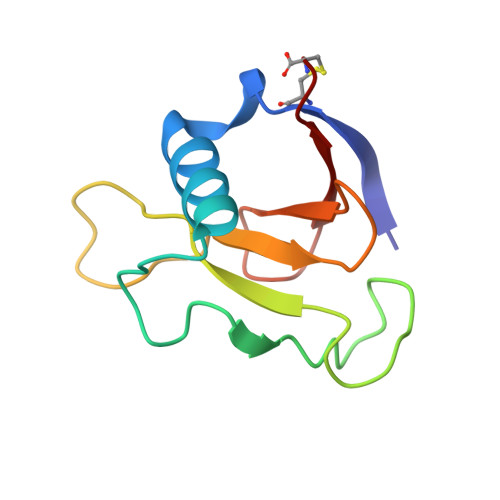Urea denatured state ensembles contain extensive secondary structure that is increased in hydrophobic proteins
Nick Pace, C., Huyghues-Despointes, B.M., Fu, H., Takano, K., Scholtz, J.M., Grimsley, G.R.(2010) Protein Sci 19: 929-943
- PubMed: 20198681
- DOI: https://doi.org/10.1002/pro.370
- Primary Citation of Related Structures:
3A5E - PubMed Abstract:
The goal of this article is to gain a better understanding of the denatured state ensemble (DSE) of proteins through an experimental and computational study of their denaturation by urea. Proteins unfold to different extents in urea and the most hydrophobic proteins have the most compact DSE and contain almost as much secondary structure as folded proteins. Proteins that unfold to the greatest extent near pH 7 still contain substantial amounts of secondary structure. At low pH, the DSE expands due to charge-charge interactions and when the net charge per residue is high, most of the secondary structure is disrupted. The proteins in the DSE appear to contain substantial amounts of polyproline II conformation at high urea concentrations. In all cases considered, including staph nuclease, the extent of unfolding by urea can be accounted for using the data and approach developed in the laboratory of Wayne Bolen (Auton et al., Proc Natl Acad Sci 2007; 104:15317-15323).
- Department of Biochemistry and Biophysics, Texas A&M University, College Station, Texas 77843, USA. nickpace@tamu.edu
Organizational Affiliation:
















